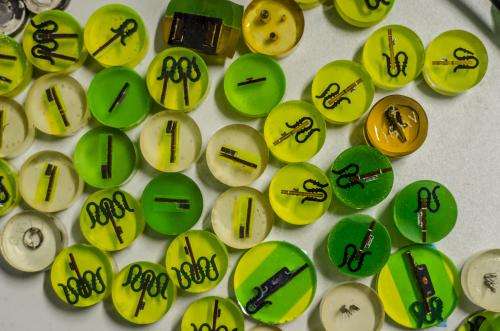ESA-Sergi Ferreté Aymerich
Embedded within these resin discs are vital clues to determine whether future space missions will fail or thrive.
These are microsections taken from printed circuit boards (PCBs), being considered for use by coming ESA projects. Such boards are key building blocks of space missions.
As the electric, electronic and electromagnetic components hosted on PCBs are increasingly miniaturised, satellites are becoming much smarter and more capable – provided the boards function as intended.
ESA's Materials and Electrical Components Laboratory – based at the ESTEC technical centre in Noordwijk, the Netherlands – has the task of checking if the performance and workmanship of candidate boards and assemblies meet rigorous space-quality standards.
Any defect in the PCBs, or in the soldering process used to attach components to the boards, could impair satellites, or even lead to the total loss of a mission.
For its role as technical gatekeeper, the Lab is equipped with powerful diagnostic tools, including optical and scanning electron microscopes capable of hundred-thousand-scale magnification.
The microsections are cast inside resin to make them easier to prepare and inspect on a microscope, in some cases with dye added to help detect defects and reveal any materials and processes underperformance.
Provided by European Space Agency























